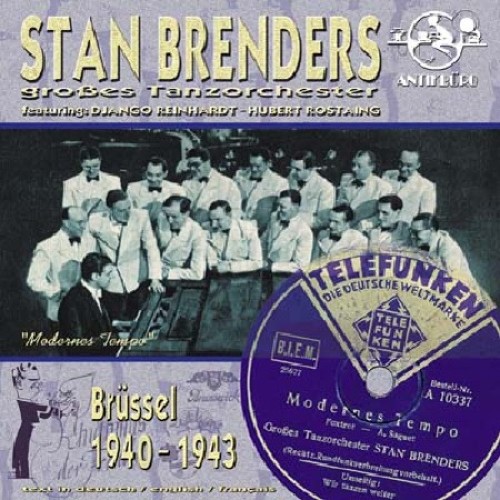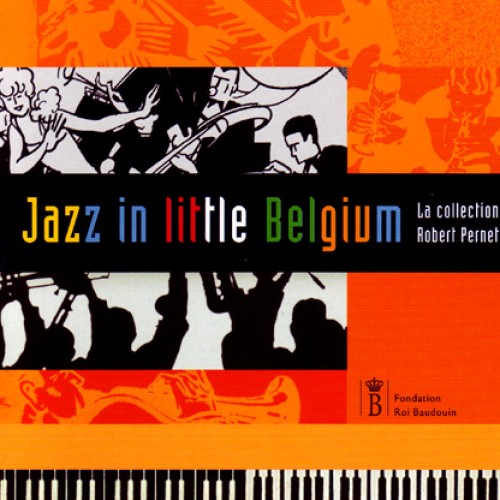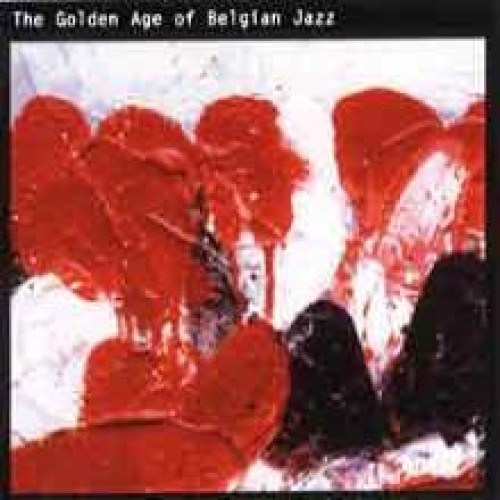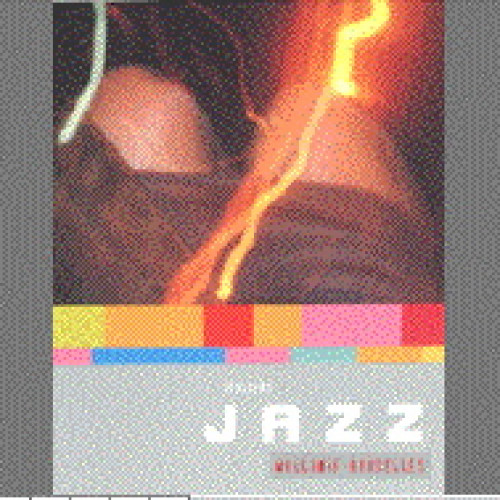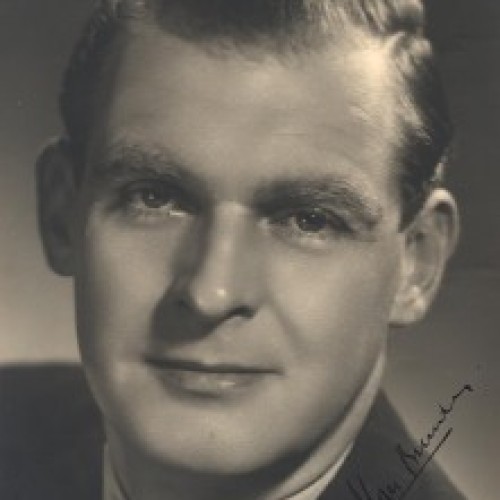
Later, he became one of most important band leaders in Belgium around the WW II period.
In 1933, Brenders played for the INR, the Belgian National Radio, which was then a glorious institution where all the music was played live. Brenders created INR's Jazz Orchestra in January 1936. Unfortunately, WWII was about to unfold. Notwithstanding, during the war, Brenders disguised many song titles to get around nazi censorship of Jazz and Swing.
During the war years, Brenders disguised many American song titles to get around Nazi censorship. In May 1942, the band backed eight performances of Django Reinhardt.
In time, Brenders increasingly used strings in the band, and the more commercial approach of a dance band.
After WWII, he was accused of collaboration, which made him a.o. loose his bandleader post at the INR.
In the following years, he could only present a large band on rare occasions.
After 1953, he played the piano in his bar in downtown Brussels, "L'Archiduc", a place which still exists and still hosts live jazz music.
He died at the age of 65.
About "Stan Brenders et son Grand Orchestre" recorded a.o. with Django Reinhardt in 1942.
For the repressive forces of Nazism and the uninhibited creativity of jazz to co-exist may have seemed an impossibility, but jazzmen kept many aspects of their music happening throughout World War II in countries such as Belgium. The resulting gigs, recordings, and performing careers acquired an additional level of interest from intrigue alone. Stan Brenders would stand on-stage in Brussels in the late '30s and announce that the next tune was going to be "Sept, et avec un combination avec onze," knowing full well the Nazi censors wouldn't be able to follow the pigeon French reference to the real song title, "Seven Come Eleven," which like most swing numbers had been decisively banned from either radio or live airplay. The Nazis had banned jazz itself, but since most of them really didn't know what it was supposed to sound like, the song titles were an all important form of identification, something like the equivalent of a Star of David. Brenders, a big band leader and conductor, is one of the original cast of characters from Belgian jazz history, which seems to start sometime around the late '20s when Charles Remue & His New Stompers Orchestra went into a London recording studio to cut the first Belgian jazz recording. The pianist in the band was Brenders, swinging alongside other Belgian jazz pioneers such as drummer Harry Belein, tenor saxophonist and clarinetist Gaston Frederic, and bassist Remy Glorieux. Although considered to be one of the best European jazz bands of the '20s, the group, under the direction of clarinetist and alto saxophonist Remue, stayed together a bit less than a year, following which Brenders began concentrating on fronting his own group. By the mid-'30s, he was conducting the Belgian State Radio Orchestra, also known as l'Orchestre Jazz de l'INR. As the war progressed, it became more and more necessary to create diversionary tactics in order to prevent undue attention being focused on jazz, including the previously described camouflage of American song titles in order to sneak by Nazi censorship. One of the great victories of jazz against the fascists came in spring of 1942, when the Brenders band backed eight performances in Belgium by gypsy guitarist Django Reinhardt, all of the activity organized strictly guerilla style in outright defiance of the Nazi edict against swinging music. But with the defeat of the swastika crowd, Brenders' music became less and less swinging, with increasing use of schmaltzy strings. While jazz listeners are likely to crash into Brenders and his orchestra in the front aisle of any Django Reinhardt collection, other examples of the Brenders sound are featured on compilations of European dance bands.
by Eugene Chadbourne, All Music Guide
SELECTED DISCOGRAPHY
(see thumbnail on top of page for more discographical info)
Swing Tanzen Verboten! Swing in Belgium and France
Swing Tanzen Verboten!: Swing Music and Nazi Propaganda
The Quintessence: Paris- Bruxelles 1934-1943
1941-1942
1996 En Belgique, Vol. 4
Read this article on Stan Brenders by Juul Anthonissen (in Dutch)
 |

